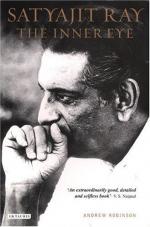|
This section contains 485 words (approx. 2 pages at 300 words per page) |

|
[Mahanagar] dramatizes a disconcerting shift in the roles of women, and hence in the patterns of family life and emotional life generally. (pp. 46-7)
American viewers, living in a culture which went through the emergence of women from the home a generation ago, will mostly find the film sentimental, and for them its appeal will be largely ethnographic: Ray is very good at catching the atmosphere of the Bengali household, the small glances and movements by which the inhabitants of the crowded apartment convey their love or disapproval or resentment. But this "humanist" appeal is not enough to preserve the film from charges of being an exotic soapopera. (p. 47)
The comparison between Ray's Charulata and his preceding film Mahanagar shows how thin the dividing line [between soap-opera and art] may sometimes be. These films have the same actress at their center …; they are both "women's pictures," focused on...
|
This section contains 485 words (approx. 2 pages at 300 words per page) |

|


